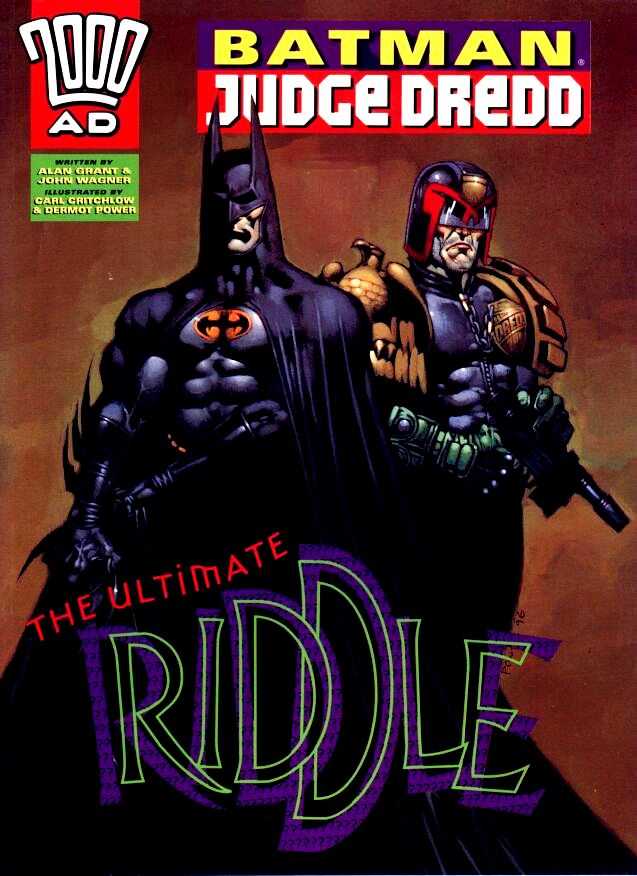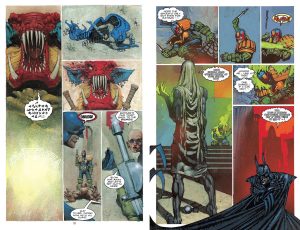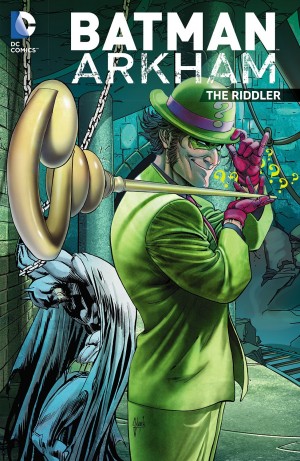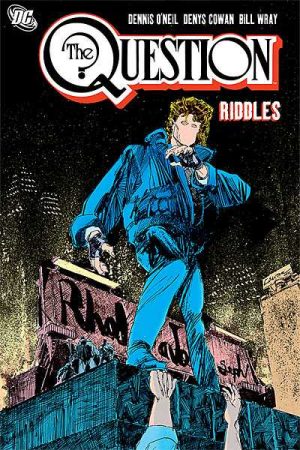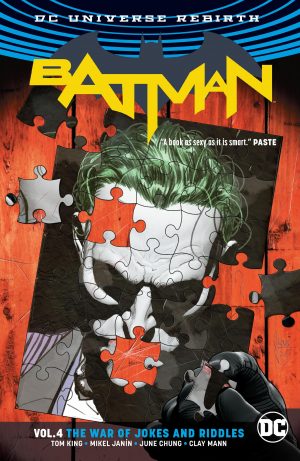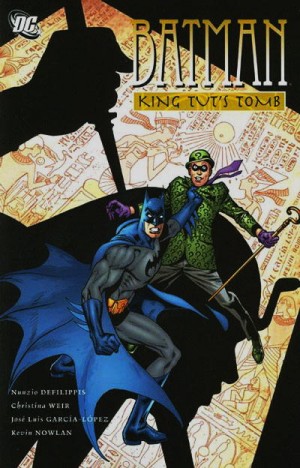Review by Frank Plowright
DC looked second best when they only considered it worthwhile publishing the first Batman and Judge Dredd teaming as a prestige format comic, when it was issued as an album sized graphic novel in the UK. However DC stuck to that format, while UK publishers Fleetway only issued Vendetta in Gotham as a paper comic. By the time The Ultimate Riddle was published, 2000AD graphic novels were appearing as a matter of course, and the UK edition is again better. That is if you can get hold of it. Perhaps the best bet is all four meetings as The Batman/Judge Dredd Collection, although this one of three teamings included in The Batman/Judge Dredd Files.
The title suggests Batman’s foe the Riddler will be the primary threat, and the immediate thought is that he’s not much of a problem for Batman alone, never mind Batman and Dredd. Writers Alan Grant and John Wagner cleverly suggest without acting, though, and while the Riddler starts proceedings, the real threat is an alien abductor who enjoys a good hunt. Batman will be the target, while Dredd and six others will hunt him down and kill him. While Dredd’s no fan (see the previous two teamings) he’s no random executioner either, whereas the other abducted warriors have no worries on that score.
Although produced in the early days of video games, The Ultimate Riddle now has that video game feel to the plot, as it involves a hero, multiple threats able to manifest anywhere, and an ultimate goal. The one real concession to Dredd’s usual world is the humorous addition of a perp accompanying Dredd when he was transported, but this is Wagner and Grant going through the motions.
Carl Critchlow’s art is very much influenced by Simon Bisley, although slightly reined in with stronger storytelling skills. He draws two-thirds of the book, and sets the atmosphere, but the final pages drawn by Dermot Power early in his career aren’t as good. The promise is there, but the technique isn’t.
In the end the story lives up to the title, but the twist is contrived. It leaves the best moments concerning the contrast between Batman’s policy of never killing with Dredd not caring, and some of Critchlow’s individual panels, but overall not very thrilling.
